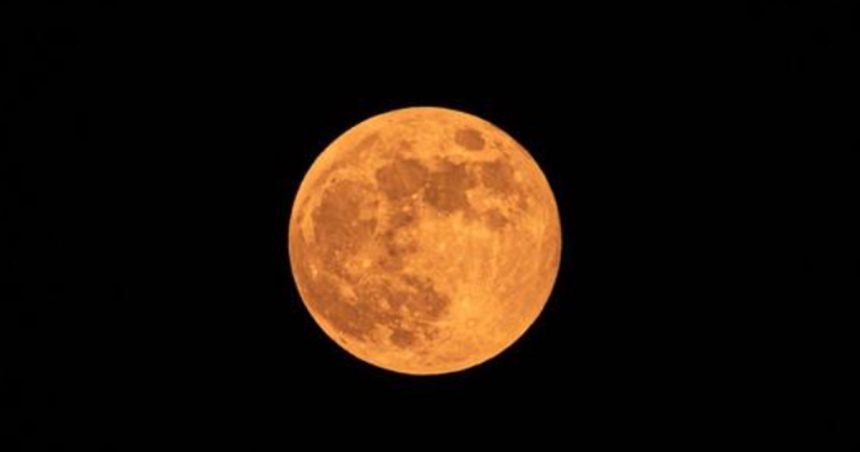The upcoming Strawberry Moon is expected to illuminate the night sky with a beautiful golden glow on Friday, marking the first full moon of the summer season. Named after the strawberry season in the United States, this celestial event promises a stunning visual display for skywatchers.
Peak Viewing Time
The moon will reach its brightest and fullest point at 9:08 PM ET and will continue to shine throughout the weekend. This full moon coincides with the summer solstice, making it a spectacle to behold as the sun reaches its highest point of the year, causing the moon to appear larger than usual.
Astronomical Significance

According to Bob Berman, the Farmers’ Almanac astronomy editor, this month’s full moon is particularly significant as it coincides with the summer solstice, making it one of the lowest full moons in recent years. Due to its lower position in the sky, the moon will appear larger than ever, creating the illusion known as the ‘Moon Illusion’.
Best Viewing Locations
To catch a glimpse of the full moon at its most majestic, skywatchers are advised to look southeast as it rises above the horizon, appearing large and golden in color. While the highlight is on Friday, NASA notes that the moon will be nearly full on Thursday as well.
Historical and Cultural Significance
The golden hue of the moon is a result of its low, shallow path across the sky. The name “Strawberry Moon” originates from Native American Algonquin tribes, who used the June full moon as a marker for the ripeness of strawberries, with a legend suggesting that wishes made while eating a strawberry under the full June moon will come true.
Read More: ‘Hidden’ Structures Discovered on Far Side of the Moon
European Traditions

Ancient Europeans also associated this moon with the Mead or Honey Moon, as late June was the time for honey harvesting, signifying the ‘sweetest’ time of year. Historical writings support this connection between the full moon and the sweetness of honey.
Origin of the Honeymoon
The term ‘honeymoon’ has roots dating back to at least the 1500s in Europe, potentially tied to this full moon being the ‘sweetest’ of the year due to the harvesting of honey. While there is no concrete evidence to support the 19th-century theory of gifting mead to newlyweds for their first month of marriage, the tradition of calling the first month of marriage the ‘honeymoon’ remains connected to this full moon.
Significance in Different Cultures

For Hindus, this full moon is observed as Vat Purnima, a time for married women to tie a ceremonial thread around a banyan tree to display their love. In Buddhist traditions, particularly in Sri Lanka, the full moon is celebrated as Poson Poya, marking the introduction of Buddhism in ancient times.
This year’s Strawberry Moon presents a captivating sight rich with historical and cultural significance, inviting viewers to appreciate its beauty and storied past. Whether admired for its aesthetics or its cultural connections, this celestial event is not to be missed.
H/t: Mail Online
Read More: The Moon is Drifting Away from Earth and It’s Actually Having an Impact on Time






